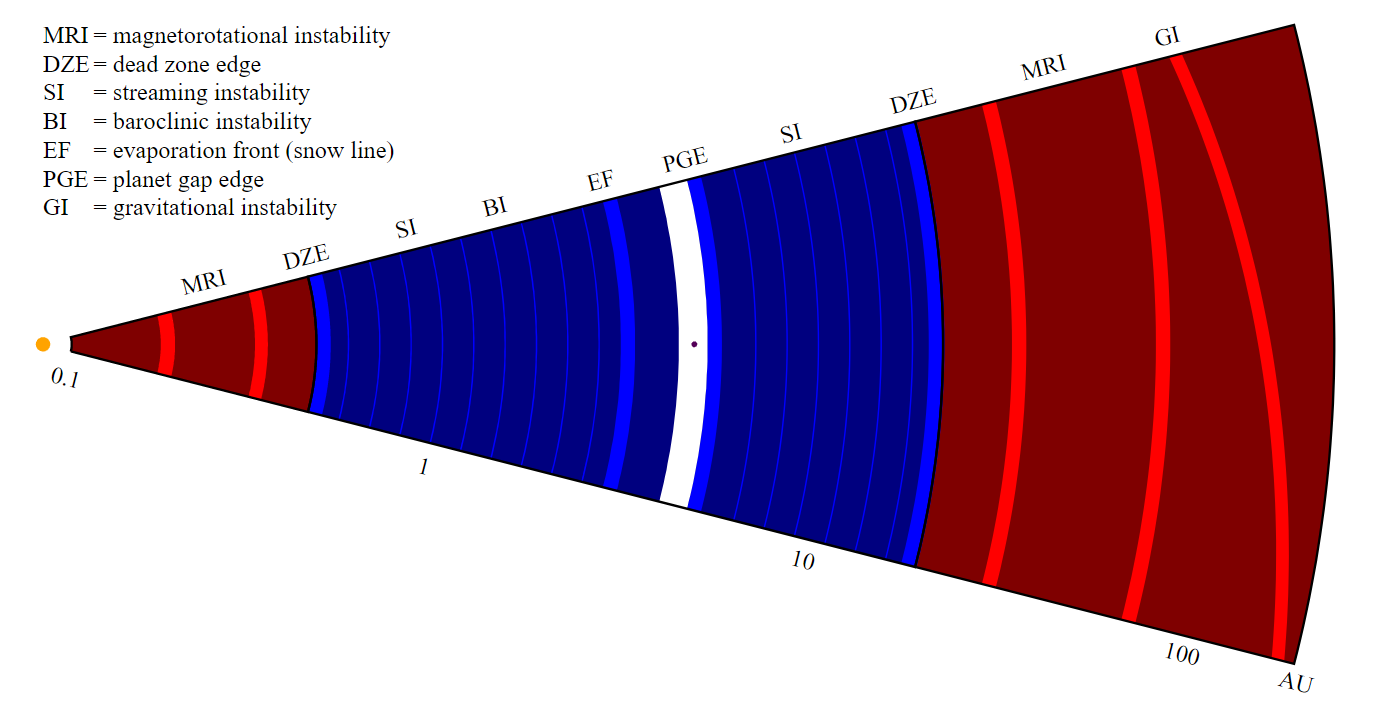Planetesimals Dynamics#
Introduction
Notes
To Do
Think about coherent plan
Implement
Colaboration
Presentation
Page
Status:
Reviewed: ❌
Updated: 15/02/2023
Planetesimals#
- [Weidenschilling, 1980]: numerical model for computing simultaneous coagulation and settling (gravitational instability/non-Keplerian rotation of nebula), composite process forms km sized planetesimals
Disk instabilities#
- []: hybrid model for planetesimal formation (particle growth starts unaided by self-gravity but later proceeds inside gravitationally collapsing pebble clumps to form planetesimals with a wide range of sizes)
Note
define all those terms
Overcoming The Bouncing Barrier#
2 Scenarios:
- Gravitational instability
- Mass transfer
cf [] for good introduction + Modelling and experiments on dust emission from comets etc., homogeneous layers of μm sized dust particles reach tensile strengths (103 – 104 Pa) far higher than water’s sublimation pressure, model of formation by gravitational instability leads to tensile strength of 1 Pa instead => could explain water driven comet activity (minimum size for dust-aggregates: ≈ 1 mm) => cometesimals must have formed by gravitational instability
Gravitational collapse ?#
[]: Lab experiments, sublimation of freely levitating ice aggregates, frequent break up, sublimation of drifting ice aggregates might locally increase the density of small dust (silicate)
Title#
Let’s jump over the Bouncing Barrier and have a look at thos km bodies that may have formed.
Planetesimals#
Dynamic Evolution of the Early Solar System#
[]
Growth Mechanism#
‣ Sintering ? #
[] (mention ethane in their paper)
- []: Sintering increases strength of neck in aggregates, sintering region can span whole nebula
- []: Numerical simulations (sintering of icy dust aggregates), accumulation of fragments in particular region of protoplanetary nebula, planetesimal formation by gravitational instability
Rocky Planet formation#
[] : Two different scenarios for rocky planet formation
From planet formation to planet atmosphere#
[]

